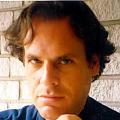Kurtz Innocent, Government Still In Power

As reported by the Associated Press, Professor Steve Kurtz of the Critical Art Ensemble was cleared yesterday of all charges related to the biological material found in his Buffalo, NY home four years ago. The indictment of mail and wire fraud in the improper obtaining of these specimens for his art work, which is critical of U.S. government agricultural policies, was dismissed in federal district court as "insufficient on its face."
This charge was all that remained of a government investigation of supposed bioterrorism, predicated on the entry of firefighters into Kurtz's home, responding to his emergency call when he found his wife dead from a heart attack in May 2004. Seeing some "suspicious" looking test tubes, petri dishes and samples, the first responders notified the FBI, who began their investigation. Agents in Hazmat suits entered the premises, impounded the computer, removed biological cultures for analysis, sequestered the cat, looked askance at Kurtz's library, even seized his poor wife's body from the coroner. It soon became obvious that Kurtz was not a terrorist, was not planning to poison the water system or bring down the government with airborne microbes, but was in fact a respected University of Buffalo professor, one of the founders of Critical Art Ensemble, and as such used harmless biological material in his work. No grand jury would indict on charges of bioterrorism.
At this point the FBI might have backed off and excused themselves for overzealousness. They might have allowed Kurtz to properly grieve for his wife. But to the rabid J. Edgars, this would have meant publicly admitting their error and somehow failing in their appointed duty, recently expanded by the USA Patriot Act of 2001. And so, disappointed in their original assumptions, they retreated to a fall back position: mail fraud and plotting to obtain potentially harmful organisms. If convicted, Kurtz might have served 20 years.
To many in the art world who rallied to his side, signing petitions, hosting benefits and decrying the government's interference in academic and artistic freedom of expression, yesterday's decision comes as some relief. Obviously also to Kurtz himself. An apology from Assistant U.S. Attorney General William Hochel Jr. would be welcome, but hardly expected. We still live in the age of Bush.

This charge was all that remained of a government investigation of supposed bioterrorism, predicated on the entry of firefighters into Kurtz's home, responding to his emergency call when he found his wife dead from a heart attack in May 2004. Seeing some "suspicious" looking test tubes, petri dishes and samples, the first responders notified the FBI, who began their investigation. Agents in Hazmat suits entered the premises, impounded the computer, removed biological cultures for analysis, sequestered the cat, looked askance at Kurtz's library, even seized his poor wife's body from the coroner. It soon became obvious that Kurtz was not a terrorist, was not planning to poison the water system or bring down the government with airborne microbes, but was in fact a respected University of Buffalo professor, one of the founders of Critical Art Ensemble, and as such used harmless biological material in his work. No grand jury would indict on charges of bioterrorism.
At this point the FBI might have backed off and excused themselves for overzealousness. They might have allowed Kurtz to properly grieve for his wife. But to the rabid J. Edgars, this would have meant publicly admitting their error and somehow failing in their appointed duty, recently expanded by the USA Patriot Act of 2001. And so, disappointed in their original assumptions, they retreated to a fall back position: mail fraud and plotting to obtain potentially harmful organisms. If convicted, Kurtz might have served 20 years.
To many in the art world who rallied to his side, signing petitions, hosting benefits and decrying the government's interference in academic and artistic freedom of expression, yesterday's decision comes as some relief. Obviously also to Kurtz himself. An apology from Assistant U.S. Attorney General William Hochel Jr. would be welcome, but hardly expected. We still live in the age of Bush.




